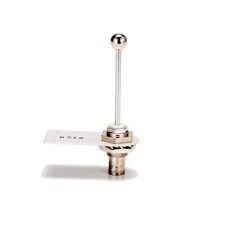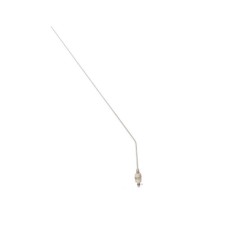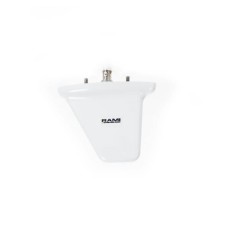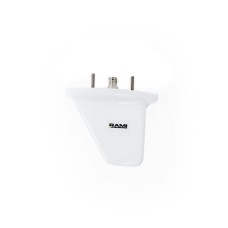RAMI
Related Pages
Tips for Ground Planes for Aircraft Radio Antennas
Most radio antennas require a ground plane. The AV-534 is a good example of an antenna that performs best with a ground plane. A ground plane is a metal surface that is connected to the antennas ground (common). There is no need for a ground plane when mounting an antenna on a metal aircraft, but it can be tough to accommodate in a fiberglass aircraft such as a sailplane.
Note: Radio antennas can be mounted inside a fiberglass aircraft, but they would not work well if mounted inside a carbon fiber aircraft.
Below is a note from RAMI about ground planes for aircraft radio antennas.
A proper ground plane is one that extends 1/4 wavelength (at the operating frequency) outward in all directions from the feed point or base of the antenna. 1/4 wavelength at aircraft com frequencies is approximately 24 inches. So the ground plane would be approximately 4 ft. X 4 ft. (or 4 ft. diameter) conductive surface with the antenna mounted in the center. You can also accomplish this with (2) four foot ( 1.22 m) long conductive wires running perpendicular to each other and electrically connected to the shield of the transmission line at the base of the antenna at their mid points. Similar to a base station antenna seen at an airport terminal building. The wires can be run inside the fuselage forward and aft and down the inside wall.
Sincerely,
Ben Ennenga
Engineering Manager / GAA Product Line Manager
RAMI
Tips for Ground Planes for Transponder Antennas
I talked to Ben Ennenga at RAMI about transponder antenna ground planes. Some interesting notes from that conversation are below. Thank you Ben for the friendly and helpful support!
- A ground plane is required (of course) with both rod style and blade style transponder antennas.
- The smallest recommended ground plane would be 12 inches in diameter (6 inches radius).
- A ground plane works about equally well regardless of whether it is made from a solid plate (such as aluminum) or instead made using 2 wires in a "+" arrangement. In either case, the radius should be at least 6 inches.
- When working with carbon fiber glider fuselages, the antenna must be mounted on the outside of the fuselage, but it is OK to mount the ground plane on the inside.
- The mounting screws for the RAMI AV-74 antenna are connected to the antenna ground. Therefore, you can connect the ground plane to either or both of the mounting screws.
- It is OK for the ground plane wires ("+" configuration) to curve and follow the inside of the glider fuselage.
RAMI-AV-22
RAMI AV-22 Rod Style Transponder AntennaThe AV-22 is a transponder antenna which utilizes a "BNC" co..
$130.00
RAMI-AV-534
Antenna, Bent Rod Style, 1/4 Wave118 to 136 MHz (Aircraft Radio Band)The AV-534 is a heavy-duty stai..
$125.00
RAMI-AV-74
RAMI AV-74 Blade Style Transponder or DME AntennaNote: Most glider pilots prefer the AV-74-1 below b..
$180.00
RAMI-AV-74-1
RAMI AV-74-1 Blade Style Transponder or DME AntennaThis antenna is like the AV-74 - but with longer ..
$185.00





